Redox Flow
-
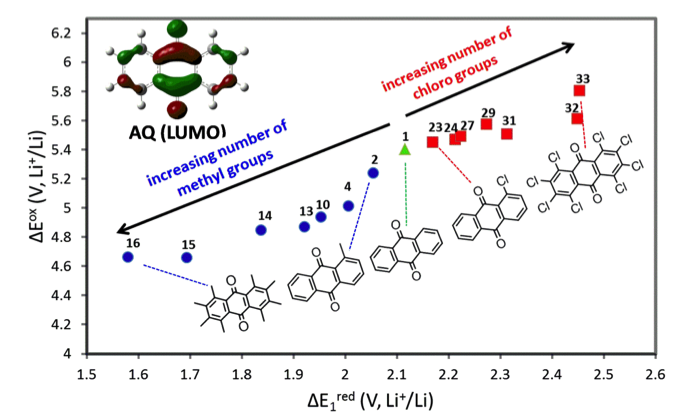
Redox Chemistry of Anthraquinone Derivatives Via Simulations
Simulations provided the contribution of functional groups toward better electrochemical properties and solubility of Anthraquinone (AQ) derivatives, a promising class of compounds for aqueous and non-aqueous redox flow applications. Read More
-
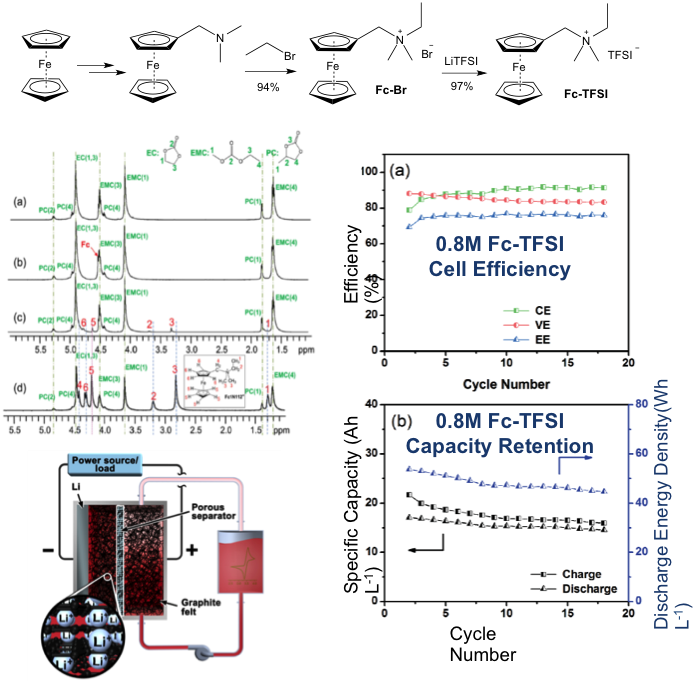
Towards High-Performance Nonaqueous Redox Flow Electrolyte via Ionic Modification of Active Species
Material tailoring led to a significant increase in the solubility of the ferrocene redox material. NMR measurement was able to decode the solvation mechanism and explain the solubility increase of the tailored compound. A Li-graphite hybrid anode enabled the nonaqueous Li/organic cell design to produce decent cyclability at high redox material concentrations and deliver energy density of ~45 Wh/L. Read More
-
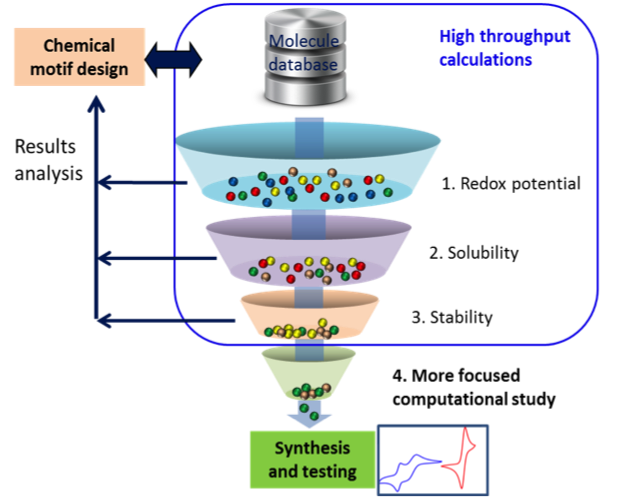
Realizing the Electrolyte Genome
JCESR is building a highly sophisticated infrastructure for high-throughput evaluation of molecular properties. This involves coupling ab initio DFT methods with rapid classic molecular dynamics, calculations of redox potentials, and solvation structure while more detailed reactivity studies are carried out. Candidates that meet performance metrics for different types of battery applications (redox-flow, Li-air, Li-sulfur and multivalent) are prioritized for synthesis and testing. Read More
-
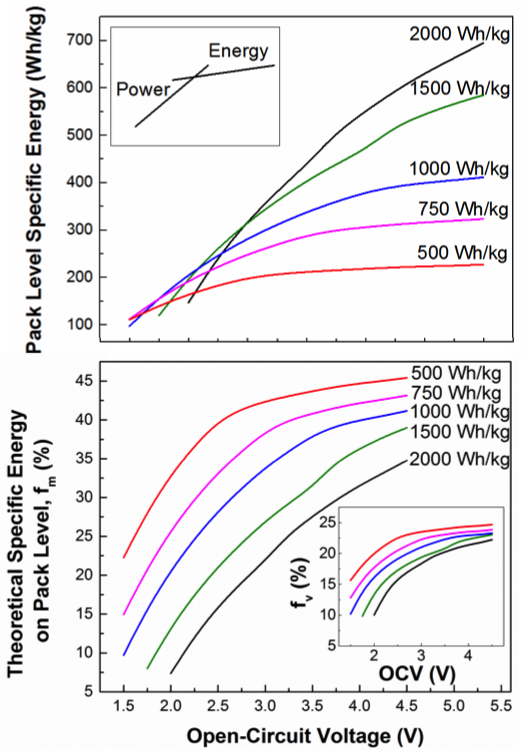
Fraction of Theoretical Specific Energy Achieved at Battery Pack Level Is Very Sensitive to the Cell Chemistry
Cell chemistry properties, rather than engineering/packaging approach, are the key factors in determining the fraction of battery material specific energy captured at pack level Read More
-
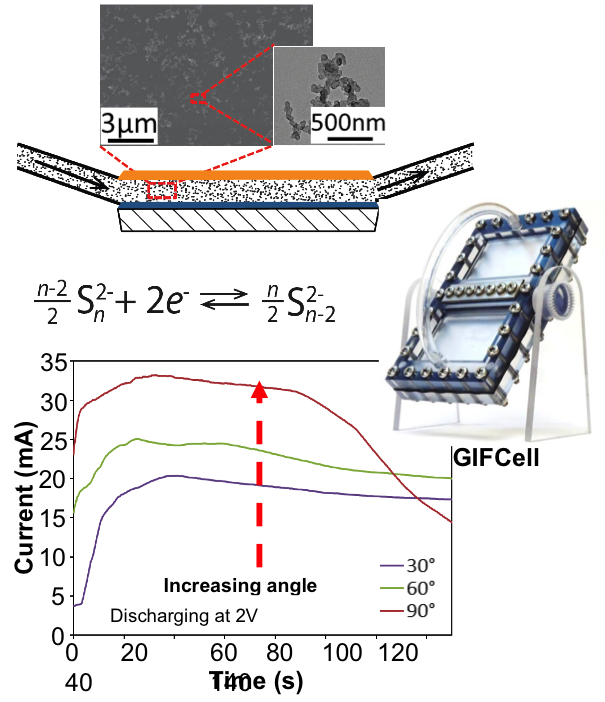
Flow Batteries Enabled by Nanoscale Percolating Conductor Networks
Created novel electronically conductive flow battery electrodes using nanoscale percolation phenomena Read More
Latest Updates
-
You’re Invited - JCESR and Beyond: Translating the Basic Science of Batteries
Please join us at Argonne National Laboratory on Tuesday, April 4, 2023 for JCESR and Beyond: Translating the Basic Science of Batteries. Registration is now open. This in-person event will celebrate 10 years of research from the Joint Center… Read More
-
A Message from JCESR: In Memory of George Crabtree
It is with heavy hearts that we say goodbye to George Crabtree, a Senior Scientist and Distinguished Fellow at Argonne National Laboratory, and Director of the Joint Center for Energy Storage Research (JCESR), who passed away unexpectedly on January 23. Dr. Read More
-
Cyanopyridines As Extremely Low-Reduction-Potential Anolytes for Nonaqueous Redox Flow Batteries
Discovery of a cyanophenylpyridine derivative with a very low reduction potential and good stability during cycling. Read More
-
Characterizing Redoxmer – Electrode Kinetics Using a SECM-Based Spot Analysis Method
Identified asymmetries in electron transfer (ET) kinetics between the reduction and oxidation of ferrocene-based redoxmers by measuring the ET rate constants (kf/kb) as a function of electrode potential. Read More
-
Benzotriazoles as Low Potential Anolytes for Non-Aqueous Redox Flow Batteries
We developed an easy-to-synthesize benzotriazole-based anolyte with a high energy redox potential (-2.3 V vs Fc/Fc+) and high solubility that demonstrates stable electrochemical cycling performance. Read More

